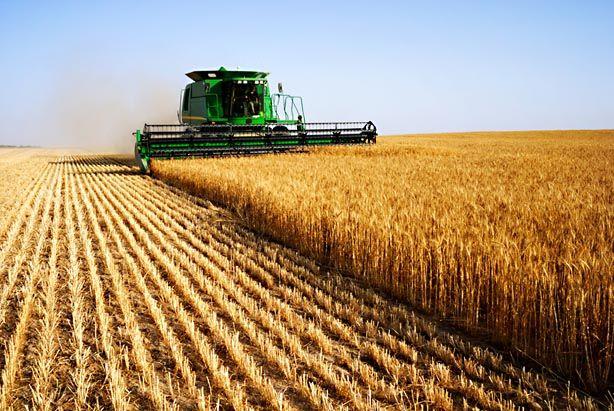Subsistence Farming Nepal
Post-Covid-19 the number of people engaged in agriculture is likely to increase with migrant labourers returning home. A large number of them live in rural areas and are engaged in subsistence agriculture NPC 2005.
Humla Thakuri Women Harvesting Millet Nepal Milk The Cow Women
Nepal is richly endowed with agro-biodiversity.

Subsistence farming nepal. These farmers are increasingly exposed to climate change induced risks such as more frequent droughts and floods. Subsistence farming Subsistence farming in Nepal. In the late 1980s it was the livelihood for more than 90 of the population although only approximately 20 of the total land area was cultivable it accounted for on average about 60 of the GDP and approximately 75 of exports.
Subsistence farmingSubsistence agriculture does not provide consistent economic growth and development the accumulation of capital or the specialization of labor due to little or no surplus. Subsistence agriculture occurs when the farmers grow crop just for themselves for them and their family membersThere wont be surplus food to sell on the market. Shibesh Chandra Regmi New ERA Kathmandu Nepal.
There are many ways to justify Nepals shifts toward high-input conventional agriculture. Undertaking by the International Center for Research on. Nepals food supply has mostly remained import-dependent.
Nepal has been practising subsistence agriculture for centuries primarily due to land fragmentation and this condition persists even till date. OF SUBSISTENCE AGRICULTURE IN NEPAL. Subsistence crops are usually organic due to lack of proper and quality inputs.
Nepal is an agricultural country having 66 percent people directly engaged in farming. In Nepal the economy is dominated by agriculture. Because of its biogeographical position Nepal contains biological elements of both the Indo-Malayan and Palaearctic realms.
Farming is subsistent in nature and crop is mostly integrated with livestock. Subsistence farming is farming and associated activities in which farmers consume most of the output from a farm and sell only a small portion of it Barnett 2011. We are a permaculture farm organic and focusing on the Fukuoka method and perennial agriculture.
They dont have very big plot of land to do agriculture at commercial level. Small scale subsistence agriculture employs 78 percent of Nepals workforce with the agriculture sector as a whole contributing to 343 percent of national GDP. Of course the country is also highly earthquake prone.
Rice maize millet wheat barley and buckwheat are the major staple food crops. Small-scale subsistence agriculture traditionally underpins Nepals rural economy rendering many livelihoods at risk to climate-related disasters further exacerbated by widespread poverty low literacy and food insecurity. Beside the trees in forest ecosystems a large number of tree species are maintained on farms as part of subsistence farming systems.
Michael Paolisso International Center for Research on. We live in a village of roughly 74 households in southern Gorkha district central Nepal. 13 Environmental features With over 86 percent of its population living in rural areas the economic well being of most Nepalese is closely related to agriculture and natural resources.
Agriculture in Nepal has long been based on subsistence farming particularly in the hilly regions where peasants derive their living from fragmented plots of land cultivated in difficult conditions. Yes the agriculture in Nepal is at subsistence level. Most of the farmers fields are fragmented.
We are a cooperative of six families who are mostly self sufficient subsistence farmers and produce essential oils and soaps as a side business. The pre-industrial subsistence systems of the mid-Hills often produced low or inconsistent yields with poor soil fertility management being the main shortfall of traditional farming methods both because of high erosion potential during the monsoon and insufficient supply of nutrients from manure or insufficient quantity of manure. As these communities rely on natural resources for their livelihood they are more vulnerable to climate change impacts than.
With a special view on the rural poor in this paper we investigate the impact of international labour migration on subsistence agricultural production in the Western Mid Hills of Nepal based on a survey conducted among smallholders with migrating family members. The Kingdom of Nepal extends 800 km east to west along the southern slopes of the Himalayas. Report of the Gender and Farm Commercialization Study GFCS a.
Pin By Danielle Nierenberg Food Tank On Foodtank The Food Think Tank Organic Farming Farm Tourism Sustainable Agriculture
Several Million Poor Farm Families Have Multiplied Their Income Using Treadle Pumps Like This One Operated By Pictures Of The Week Poverty Alleviation Poverty
Rice Farms In Particular Benefit From Tied Ridges In Terrace Farming In Order To Grow The Rice Properly The Roots Need T Nepal Nepal Trekking Hillside Farming
Soil Erosion Is A Very Real And Serious Threat To Subsistence Hill Farmers A Way To Deter The Effects Of Soi Hillside Farming Water Retention Social Awareness
Everything You Own In A Photo A Look At Our Worldly Possessions Bhutan Different Types Of Houses Material World
Subsistence Farming In The Annapurna Himalayas In Nepal Asia Nepal High Quality Stock Photos Photo
Pin By Chad Oyler On Outside Water Retention Water Retention Remedies Hillside Farming
Most Common Nepal Famous Fruits Are A Good Source Of Nepal Famous Food Nepal Is A Cultural Coun Nepal Subsistence Agriculture Top Soil
Subsistence Farming In Altiplano Bolivia
Hoe Away Service Trip India India Travel
Subsistence Farming In Chomrong In The Annapurna Himalayas In Nepal Asia Travel Destinations Photography Stock Photos Mustang Nepal
Ypard Nepal Family Farming Photo Contest Photo Photo Contest Nepal
Ypard Nepal Family Farming Photo Contest Photo Farm Activities Farm
Ypard Nepal Family Farming Photo Contest Photo Farm Photo Contest
Conservation Farming Is Among The Most Low Cost Solutions For Hillside Farmers Because Of Its Counter Effects O Modern Agriculture Hillside Farming Agriculture
Ypard Nepal Family Farming Photo Contest Photo Farm Photo Contest
Rukum Nepal Nepal House Styles Landscape




Post a Comment for "Subsistence Farming Nepal"